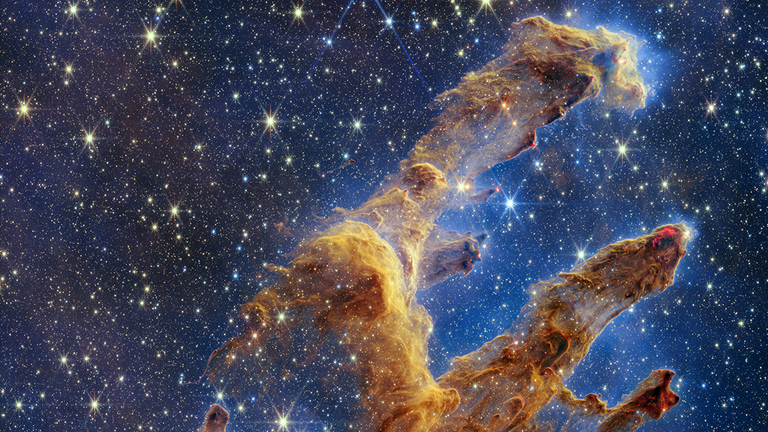Molecular species that make up the “building blocks of life” have been discovered in deep-space regions of ice clouds.
use NASA’s James Webb Space Telescopea team of astronomers and scientists confirmed the presence of methane and ethanol, as well as small compounds containing nitrogen and sulfur.
On Earth, sources of methane include emissions from wetlands, oceans, landfills and cattle rearing, while most ethanol comes from fermenting starch and sugar.
They were discovered about 500 light-years from Earth in a region with temperatures ranging from -270C to -250C, which had never been observed before.
The international team spent 30 hours observing two regions in the dense and difficult-to-study Chameleon I molecular cloud where dozens of young stars are forming.
NASA’s powerful telescopes are sending back detailed images and data from which scientists in a so-called ice age can identify molecules.
The image at the top of this article shows the central region of Chameleon I, with cool blue clouds illuminated (orange) by the light of a young star.
It is the light from that star and other stars in the background that is used to detect ice in the cloud, which absorbs starlight passing through them.
“This is exciting for two reasons,” said astrochemist Professor Martin McCoustra.
“One is that it gives us more confidence in the conditions we’re recreating in the lab.
“Second, these molecules are the building blocks of life.
“We are increasingly certain that many ingredients in the organic soup of life’s evolution have extraterrestrial origins and were a natural part of the formation process of the sun and solar system.”
read more:
James Webb Space Telescope’s New Pillars of Creation Image
The ‘Desolate Environment’ of Space
The telescope is used as part of a program through which it is awarded science projects to aid in their research.
Hopefully the Ice Age team will be able to use it again to take a closer look at these icy regions of space.
Professor McCustra, of Heriot-Watt University in Edinburgh, said the telescope was key to discovering more of space’s most “inhospitable environments”.
“To see icy dust grains in space, you need to use a star as a light source to illuminate them,” he said.
“It’s the same as what we do in the lab, of course on a much larger scale.”
He added: “We are confirming that what we see and reproduce in the lab is what happens in space.
“This gives us even more confidence that chemical reactions in icy environments are the main pathway for the formation of the chemical precursors of life in the primordial chemical soup.”
The journal Nature Astronomy reports on the Ice Age discovery.
